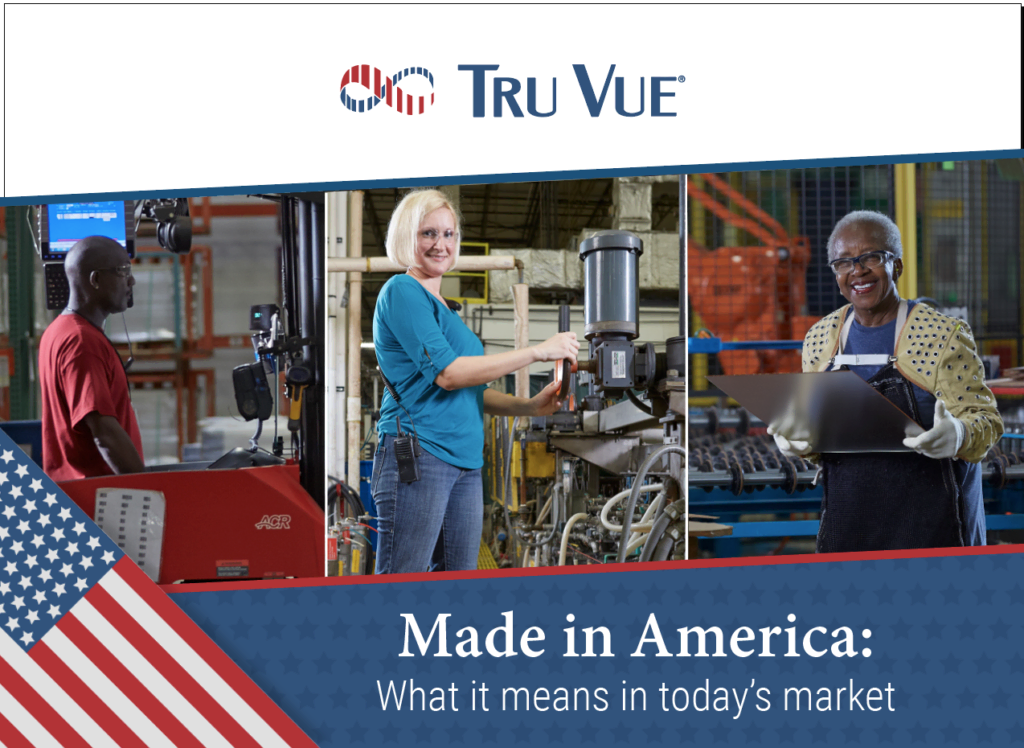For years now, politicians and businesses have put emphasis on buying domestically made products in an effort to strengthen the country’s manufacturing industry and to mitigate overseas outsourcing. Here we’ll go over what it means to be Made in America and the recent implications it presents to American manufacturers.
What Does it Mean to be Made in America?
You’re likely aware of the product labels and marketing materials that tout Made in the USA. What you may not know is that despite the label’s self-explanatory meaning, most products that carry it must comply with stringent federal qualifications.
According to the Federal Trade Commission (FTC), “Made in America means that ‘all or virtually all’ the product has been made in America. That is, all significant parts, processing and labor that go into the product must be of U.S. origin. Products should not contain any — or only negligible — foreign content. . .”
Keep in mind, however, that the rules actually do depend on what the product is. For instance, textile and wool products must always be labeled to identify the country where they were processed/manufactured. Meanwhile, cars manufactured after October 1, 1994, must disclose where a car was assembled, the percentage of equipment that originates from the US and Canada, and the origin of the engine and transmission.
According to Reuters, the order, “directs federal agencies to reevaluate the threshold used to determine U.S. content, to prevent companies that sell to the government from importing largely foreign-made goods and selling them as U.S.-made after making minor tweaks.”
Essentially what this means is that in order to be able to claim your products are Made in America, there will be stricter requirements to do so. The reason for this is that some large corporations have implemented heavy-handed Made in USA marketing campaigns, but then turn around and court foreign manufacturers, skirting the intended rules of making such claims and taking advantage of loopholes to save money. Now, those companies will have to either remove such labels or change their manufacturing processes to adhere to the new orders.
For more information about what it takes to utilize the Made in USA label, visit the FTC website and stay tuned for our next blog post covering recent developments on this issue.
Tru Vue Products Are Made in the Midwest
Located 50 miles south of Minneapolis–Saint Paul situated at the confluence of the Cannon and Straight Rivers in Southern Minnesota sits our state-of-the-art manufacturing facility in Faribault. With an ever-growing workforce population and robust transportation network, Faribault was the logical choice for Tru Vue to set up shop. We’re proud of our midwest roots and use of leading-edge technology when it comes to our anti-reflective technical glass and acrylic. We believe in supporting American manufacturers and will do whatever it takes to ensure we are compliant with regulations to be able to claim so. For more information on our technical glass and acrylic, visit our webpage.
Additional Reading
- Discover Vista Anti-Reflective® Post Temperable Glass
- Simplify Your Next Glass Project: Vista Anti-Reflective® with Post Temperable Coating
- How Retail is Adapting to Changing Consumer Needs Through Technology & Innovation
- Alternative Dining Methods May Be Here to Stay: Here’s What Fabricators & QSRs Should Know
Share this Article:
This article is intended for educational purposes only and does not replace independent professional judgment. Statements of fact and opinions expressed are those of the author(s) individually and, unless expressly stated to the contrary, are not the opinion or position of Tru Vue or its employees. Tru Vue does not endorse or approve, and assumes no responsibility for, the content, accuracy or completeness of the information presented.
